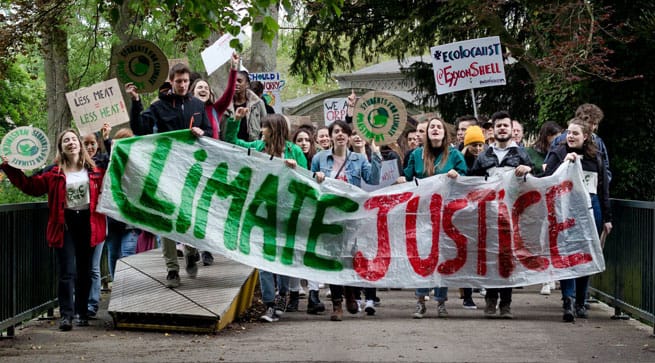The planet is around 1 degree Celsius warmer than it was 160 years ago. That may not sound a lot but that warming has already brought rising sea levels, extinction of species, homes, and habitats destroyed by flooding, loss of land, famine, and drought.
Scientists are now saying that a global warming rise above 1.5 degrees Celsius will impact climate to go from bad to terrifying. “It’s about the point where we’ll likely see many natural systems begin to cross dangerous points of no return, triggering lasting changes and transforming life as we know it.”
The good news is that bamboo can help fight climate change. The United Nations International Panel on Climate Change (IPCC) issued a report on Monday outlining the global predictions for global warming, with implications for the world of bamboo and rattan.
#1: Bamboo Sequester Carbon
According to the Guinness Book of Records, bamboo is the fastest growing plant in the world. Bamboo is a giant grass plant. And because it is a grass, if you cut it, it grows back so quickly, making it one of the most the ideal crop for rapid actions in terms of sequestering carbon from the atmosphere, according to Friederich, who has a PhD in groundwater hydrochemistry.
Bamboo can reach full maturity in one to five years, making it perhaps the only tree-like plant that can keep up with the rate of human consumption in terms of fuel, timber, and deforestation, according to experts. This is unlike hardwood trees, which can take up to 40 years to grow to maturity.
#2: Bamboo Replaces Fossil Fuel and Reduce Deforestation
Bamboo can provide a sustainable source of bioenergy for the many people who rely on solid biomass for cooking, as charcoal or briquettes. Because it regrows quickly and matures faster than most types of trees, bamboo can take the pressure off other forest resources, reducing deforestation.
#3: Bamboo is Adaptable
Bamboo’s rapid establishment and growth allow for frequent harvesting, provides a year-round source of income, and can be converted into an increasingly wide variety of value-added products for sale.
#4: Bamboo Restores Degraded Lands
Bamboo restores degraded lands. It thrives on problem soils and steep slopes that are unsuitable for other crops, it is an effective windbreak, and its sturdy rhizomes and roots regulate water flows and prevent erosion. A documented case in India speaks of rebuilding rural livelihoods where 80,000 hectares of degraded land were brought back into productivity using bamboo.
#5: Bamboo can be made to Livelihood Products
Bamboo is documented to hold 10,000 uses from furniture to paper, to fabrics, household flooring, and in-home architecture. It offers a proven tool to fight rural poverty and restore the natural resource base that is the foundation for economic sustainability.

